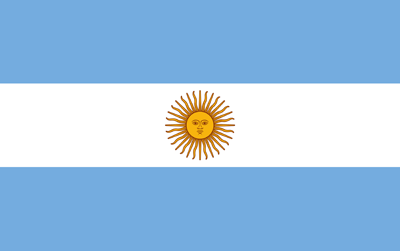Pakistan Local Cotton Market:
(The local cotton market remained dull due to holidays and monsoon delays, keeping prices stable. Pakistan’s ginning factories received 442,041 bales by mid-July 2024, with 395,695 bales processed and 67,152 unsold. Globally, U.S. cotton production and stocks are up, while world ending stocks are projected to decrease)
1- In the local cotton market, business activity was dull and low due to two consecutive holidays, which also affected prices. Ginners showed softness in prices, and international cotton markets remained soft as well. These factors helped to keep the prices at the same levels.
2- The monsoon has delayed the arrival of the new crop and market activity to remain moderate. While some buyers in urgent need of stock are making purchases, most are waiting for the new cotton, which is expected to start arriving by the end of July.
3- Over 442,041 seed cotton bales have reached ginning factories in Pakistan as of July 15, 2024, with Punjab receiving 114,375 bales, Sindh 327,666 bales (including 263,282 in Sanghar), and Baluchistan 11,200 bales. Out of these, 395,695 bales were processed, with the textile sector purchasing 374,889 bales and
67,152 bales remaining unsold. The Trading Corporation of Pakistan has not yet started procurement, and 215 ginning factories are operational.
4- The July U.S. cotton projections for 2024/25 show higher acreage, production, and stocks, with a 1-million-bale increase to 17.0 million bales and ending stocks rising to 5.3 million bales. The season average upland farm price is reduced to 68 cents per pound.
5- For the global 2024/25 cotton balance sheet, production and consumption are up, while beginning stocks and world trade are down, resulting in world ending stocks being reduced to 82.6 million bales. Revisions for 2023/24 include lower beginning stocks and higher consumption, leading to a 1.7-million-bale reduction in ending stocks.
6- Last week, cotton prices in Punjab and Sindh showed firmness from Rs 17,500 to Rs 19,200 per maund,
(USC 0.77~0.85 lbs). In Sindh, cotton rate was Rs 17,500 to Rs 18,500 per maund, while in Punjab it ranged from Rs 18,800 to Rs 19,200 per maund. KCA was same at Rs. 18,000 per maund and PSF was same at
Rs. 380 PKR/kg.
Local Yarn Market:
(Limited business activity was witnessed in local yarn market. It is expected that market will remain un change with stable yarn prices. However, it relies heavily on end-user demand and stability in regional cotton prices)
1- The local yarn market remained stable this week, with yarn prices steady despite limited business activity.
2- Suppliers are maintaining lean inventories and facing pressure from rising energy and high production costs.
3- PSF prices remained stable this week and are expected to hold steady next week.
4- The Faisalabad market experienced slow activity, with consistent order bookings for viscose and fine-count yarns. However, cash flow shortages continue to be a challenge.
| Count | Price in Pak Rupees / 10 LBS | Price US$/Bale |
| 16/1 Carded Weaving | 3350 – 3450 | 485 – 500 |
| 20/1 Carded Weaving | 3450 – 3550 | 500 – 515 |
| 30/1 Carded Weaving | 3850 – 3950 | 560 – 575 |
| 20/1 Combed Weaving | 4000 – 4150 | 580 – 600 |
| 30/1 PC Carded Weaving 52:48 | 3400 – 3600 | 495 – 520 |
| 40/1 Combed Compact Weaving | 4600 – 4700 | 665 – 680 |
| 60/1 Combed Compact Weaving | 6150 – 6300 | 890 – 915 |
| 80/1 Combed Compact Weaving | 8100 – 8300 | 1175 – 1205 |
| 40/1 CVC Carded Weaving 60:40 | 4200 – 4300 | 610 – 625 |
Export Yarn Market:
(The export yarn market improved business activity as better deals closed as compared with last couple of weeks. Chinese customers are also placing orders with addition of good quantities from European sector)
1- The export yarn market showed flexible sentiment in terms of price. suppliers showed their fullest interest to close business where they received firm bids from customers.
2- In China, customers are checking prices and closed business with desired suppliers where they could achieve their target prices.
3- Local cotton prices were firm throughout this week, international cotton prices were soft in this week. Local cotton expected to drop after arrival of handsome cotton in local market , however rainy season may impact on rise due to damage of quality cotton.
4- Suppliers are in a difficult position due to existing stock levels and high energy costs, which add pressure and reduce the viability of exports.
5- European customers remained active before closing for their holidays and decent numbers of enquiries were received. Business materialization was good too.
6- It is expected that the export market will receive substantial orders in days to come as demand is picking up
| Export Yarn Prices | ||||||||||||||||
|
Local Fabric Market:
(Local fabric market was active as bulk orders were placed mainly by the local brands. For coming weeks, we forecast stable business activity to prevail mainly for wider-width fabrics)
1- This week, the local textile market exhibited a firm trend, with moderate activity observed for both narrow and wider-width fabrics.
2- Local buyers shared limited inquiries and booked orders after negotiations at the same price level as last week.
3- Local brands were active and booked bulk orders both with airjet and Sulzer units mainly on conversion basis.
4- Currently, the weavers are following orders to cover their looms however, they have booked their narrow-width looms until 3rd week of August 2024. Wide-width looms have reached full capacity until early September’2024.
5- Special looms are pre-booked until the middle of September 2024, with deliveries scheduled onward
Export Fabric Market:
(Slow business activity was seen in export fabric market. The prices were stable for narrow-width fabric; however wider-width fabric, the prices were soft. The slow market may be observed in the days to come as well)
1- Slow business sentiment was observed in the export fabric market due to slow demand as well as midweek religious holidays.
2- Fabric prices were stable due to stable raw material prices.
3- Suppliers are booked till end of Aug and offering early Sep onward deliveries.
4- Mixed trading activity was observed from European and USA markets.
5- Wider-width suppliers have comfortable booking and are offering Oct onward deliveries.
6- Prices for wider width were softened due to soft yarn prices mainly based on imported yarn.
| Local and Export Fabric Prices
| ||||||||||||
|
Bed Linen and Towel:
(Pakistan HT industry is pacing towards the collapse if immediate actions regarding high energy tariffs and severe taxes are not taken up by relevant authorities. Despite the open market to export goods against A steady flow of inquiries, financial losses are affecting the industry and will result in ultimate collapse if the conditions are not improved)
1- Pakistan’s HT industry is at the brink of collapse if the situation remains same in regard with soaring energy costs.
2- These tariffs are highest in the region and domestic production houses are jeopardized.
3- Most of the HT industry is running by lowest profit margins, break evens and even at losses. This terminology of current industry running is very temporary and in the long run, will prove destructive for the production units which will ultimately result in Industrial shut downs.
4- Having said above, there is a reasonable flow of inquiries from Europe. So it can be rightfully stated that business is there. Opportunities are there . And market is still open to order confirmations and bookings, however , it is the essential need to time to subsidize the HT industry in terms of tax reliefs , Energy tariff reduction as well as introduction of Business friendly policies.
Garments:
(Overall garment factories are operating on sixty to seventy percent of their production capacities and striving to grab more
orders to fulfill their empty space. For that, factories are also ready to squeeze their margins to clinch the orders. Some brands are also working on FW25 developments which show a healthy sign for future orders)
1- The Pakistan garment industry is having trouble operating at full capacity.
2- The majority of export clients do not place large orders, such as those for the entire season, because they do not believe that shops would have a strong demand.
3- Orders are placed in segments, just taking urgent demands into account.
4- The majority of clothing manufacturers are operating at sixty to seventy percent of their capacity, and they are actively seeking more orders to replenish the capacity that is not being utilized.
5- A few US and EU brands are developing their FW25 products. Factories can often begin accepting orders by the end of September, although this will depend on the kinds of clothing and accessories needed.
Crude Oil:
1- Crude Oil prices opened at USD 81.91 a lower level as compared to last week’s closing figures. In this week, crude oil prices showed a mixed trend and closed on the lower side by the end of the week.
2- In the last day of the week, Crude Oil prices closed at USD 80.13 with a decrease of 1.78 USD cents as of the opening figure of the week.
| Opening of Week | Closing Of Week | Change | |
| Price | 81.91 | 80.13 | -1.78 |
Exchange Rate:
1- In last week values of Pak rupee appreciated against US Dollar’s, other major currencies showed a mixed trend in both interbank and open markets.
2- At the end of the week, the Euro closed on a negative note with the figure of 1.09 and the British Pound also closed on a negative note with a figure 1.29 against USD
| Selling | Buying | |
| LC Sight | 275.81 | 275.76 |
| LC 120 Days | 261.00 | 260.95 |
| Open Market | 281.34 | 275.32 |
New York Cotton Future:
The New York Cotton futures started the week higher than the previous week’s closing figures. NYCF showed a mixed trend throughout all sessions and closed on the lower side by the end of the week.
1- October 2024 closed at 69.98, experiencing a drop of 88 points from the previous week.
2- December 2024 closed at 70.70 showing a lower trend of 174 points from the previous week.
3- March 2025 closed at 72.62, a drop of 164 points from the previous week.
4- May 2025 closed at 74.00, a decrease of 159 points from the previous week.
Liver Pool Indices:
Liverpool Index A was opened at 81.50 on the same levels as the previous week’s closing figure.
In this week Index “A” showed an upward trend and closed on the higher side by the end of the week.
At last day of the week, LPI “A” closed at 82.35 with an increase of 85 points..
| Opening of the Week | Closing of the Week | Change | |
| Index A | 81.50 | 82.35 | 0.85 |







